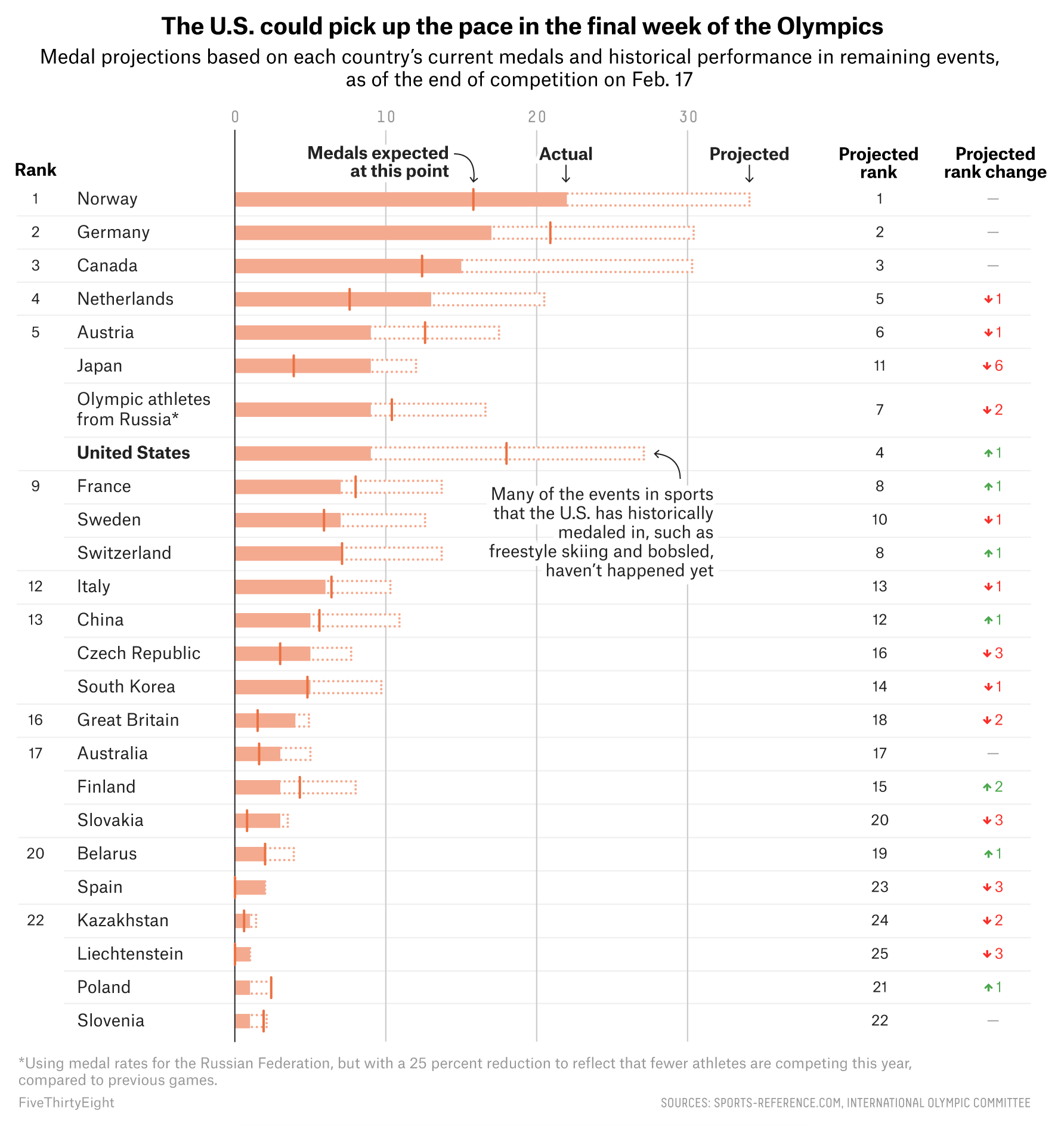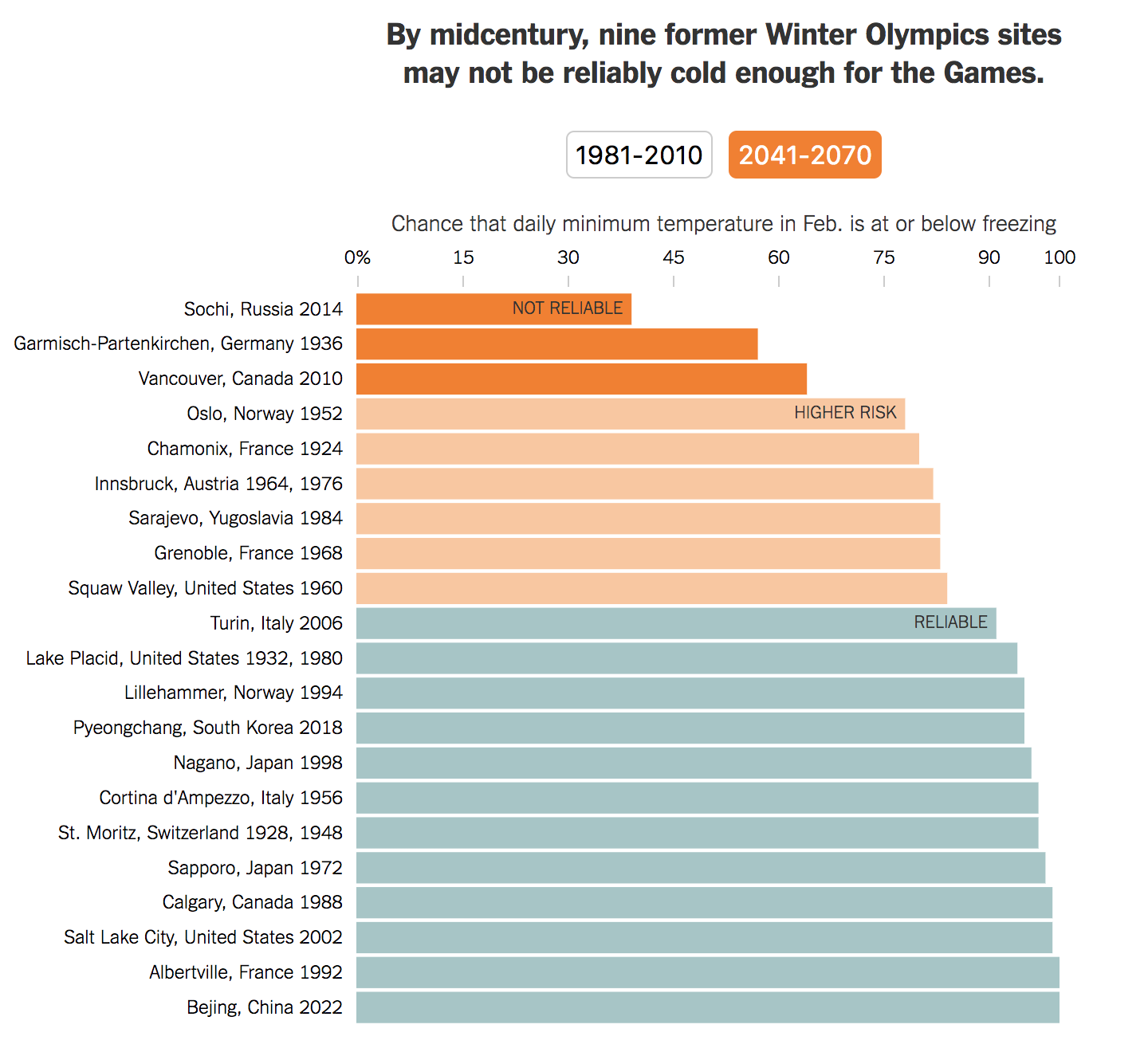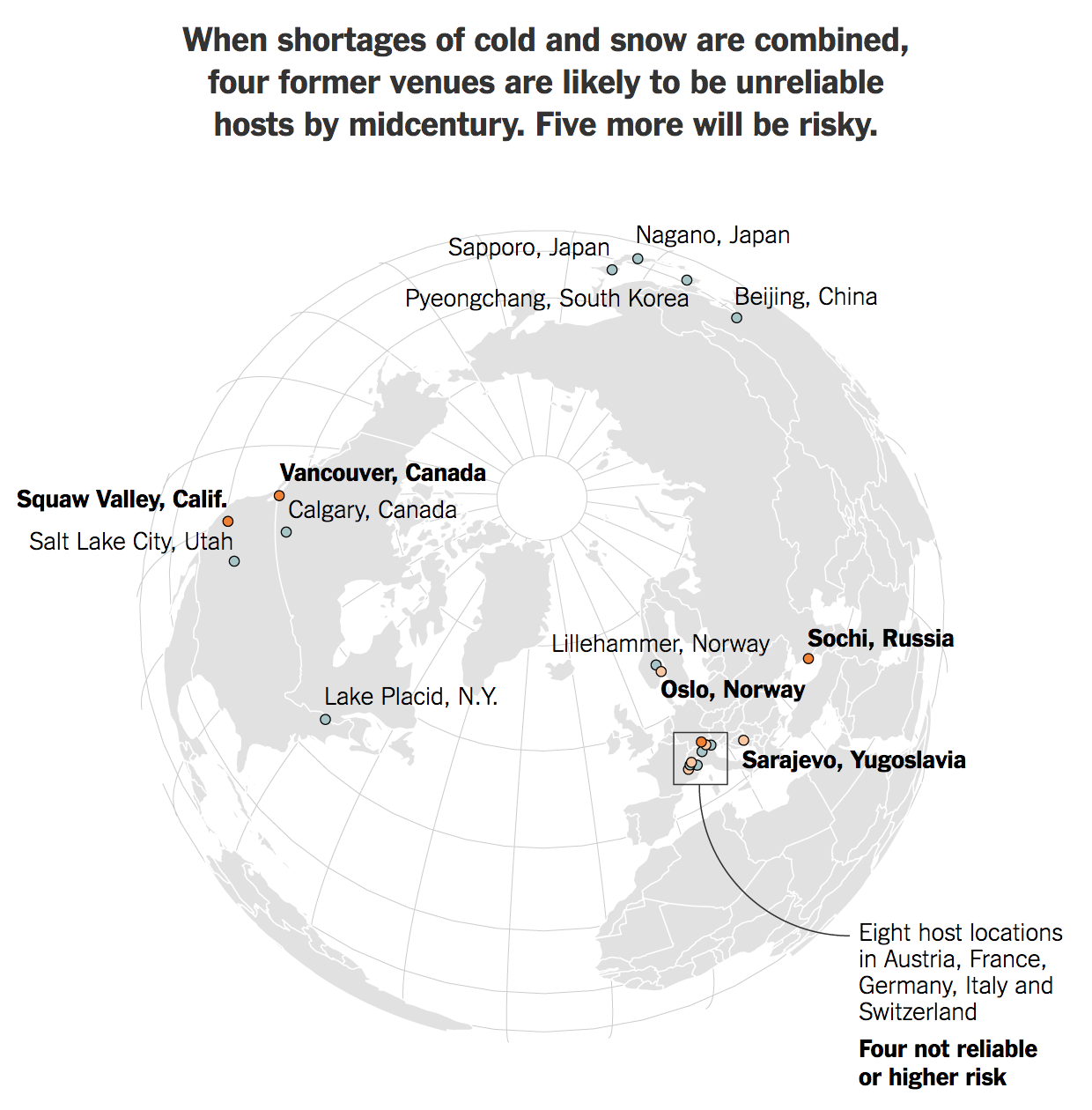I don’t know if you heard, but the Winter Olympics just concluded. I’m admittedly not a huge fan of the Winter Olympics, but that doesn’t mean I didn’t keep my eye on some of the stories coming out of the coverage. One that I liked was this piece from FiveThirtyEight.

It was about halfway through the Olympics and the US was not doing terribly well. The chart does a great job of showing how various countries were performing, or over- or under-performing, their expected total medal winnings. It did this through a filled bar chart with a bar-specific benchmark line. It was a nice combination of a couple of different techniques to incorporate not just the usual above or below the trend, but also the actual amounts.
Credit for the piece goes to Gus Wezerek.


